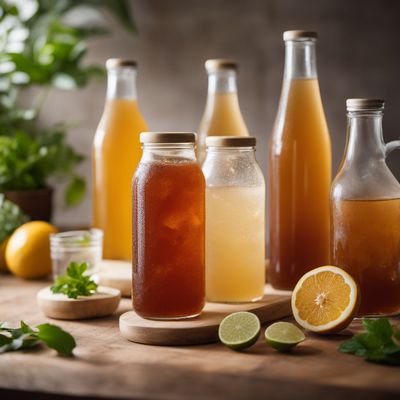
Ingredient
Energy drinks
The Power Boost in a Can
Energy drinks are typically carbonated beverages that contain high levels of caffeine, sugar, and other stimulants. They are known for their ability to provide an instant energy boost and increase alertness. The taste of energy drinks can vary, but they often have a sweet and slightly acidic flavor. The texture is typically smooth and effervescent, similar to other carbonated drinks. Energy drinks are commonly consumed as a pick-me-up or during physical activities.
Origins and history
Energy drinks were first introduced in Japan in the 1960s and gained popularity in the United States in the 1990s. They were initially marketed as functional beverages to improve mental and physical performance. Today, energy drinks are consumed worldwide and have become a multi-billion dollar industry. They are often associated with sports and are popular among young adults and athletes.
Nutritional information
Energy drinks are high in caffeine and sugar, providing a quick energy boost. However, they are also high in calories and may contribute to weight gain if consumed in excess. It is important to consume energy drinks in moderation and be aware of their potential side effects, such as increased heart rate and dehydration.
Allergens
Energy drinks may contain allergens such as artificial sweeteners, preservatives, or food colorings. Individuals with sensitivities or allergies to these ingredients should read the labels carefully before consuming energy drinks.
How to select
When selecting energy drinks, look for reputable brands that clearly list the caffeine and sugar content on the packaging. Opt for options with lower sugar content and consider choosing those that are fortified with vitamins or natural ingredients. Additionally, check the expiration date to ensure freshness.
Storage recommendations
To maintain the freshness and quality of energy drinks, store them in a cool and dry place away from direct sunlight. Avoid exposing them to extreme temperatures, as this can affect the taste and carbonation. Once opened, refrigerate the energy drink and consume it within a few days for the best flavor.
How to produce
Energy drinks are typically produced by beverage companies using specialized equipment and processes. It is not recommended for amateurs to attempt producing energy drinks at home due to the complex formulation and potential safety concerns.
Preparation tips
Energy drinks are commonly consumed as they are, straight from the can or bottle. They can also be used as mixers in cocktails or combined with other beverages for flavor variations. When consuming energy drinks, it is important to be mindful of the caffeine content and avoid excessive consumption, especially in combination with alcohol or other stimulants.
Culinary uses
Energy drinks are often consumed as a quick energy boost or as a refreshing beverage during physical activities. They are popular among athletes, students, and individuals looking for a temporary energy boost. Energy drinks are also used as mixers in cocktails and mocktails.
Availability
Energy drinks are widely available in supermarkets, convenience stores, and online retailers. They can be found in most countries around the world, with varying brand options and flavors.

